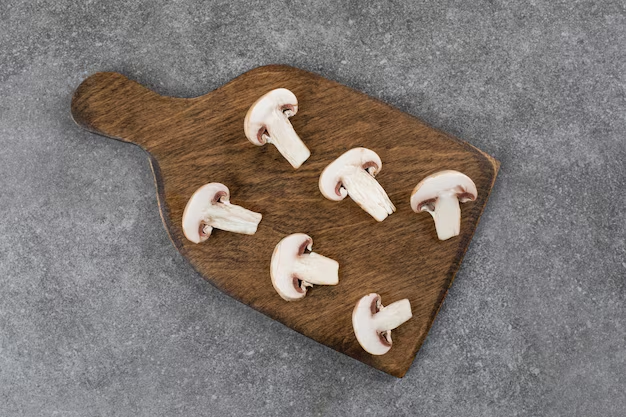The Shelf Life of Mushrooms: How Long Do They Last in the Refrigerator?
Mushrooms are a versatile and delicious ingredient found in kitchens worldwide, celebrated for their unique flavor and nutritional value. Whether you adore a fresh mushroom stir-fry or a creamy mushroom soup, keeping your fungi fresh is essential for safe and enjoyable meals. But when it comes to storing mushrooms, particularly in the refrigerator, how long can you keep them before they go bad? Let’s explore the lifespan of mushrooms in your fridge, along with some practical storage tips to extend their shelf life.
🍄 The Nature of Mushrooms: Why They Spoil
Mushrooms, unlike many other vegetables, are a type of fungus. This unique classification affects their storage needs and shelf life. Here are a few reasons why mushrooms tend to spoil:
- High Moisture Content: Mushrooms contain a significant amount of water, which can lead to quicker spoilage if not stored correctly.
- Delicate Structure: The soft and delicate nature of mushrooms makes them susceptible to bruising, contributing to faster decay.
- Lack of Protective Skin: Unlike vegetables with hard skins, mushrooms offer little defense against bacteria and mold.
Understanding these properties helps in making smarter decisions about mushroom storage, whether you've bought them fresh or harvested them yourself.
📅 How Long Do Mushrooms Last in the Refrigerator?
When stored properly, mushrooms typically have a fairly limited shelf life. Here’s a general guideline to determine how long your mushrooms might last:
- Fresh Whole Mushrooms: Generally, these can be kept in the refrigerator for about 5 to 7 days. Their longevity depends on factors such as their initial freshness at purchase and how they are stored.
- Sliced or Chopped Mushrooms: Once mushrooms are cut, they tend to spoil faster due to broken cell walls, lasting about 3 to 5 days in the fridge.
- Cooked Mushrooms: Cooked mushrooms may keep their quality for about 3 to 5 days in the refrigerator, providing they have been promptly stored in an airtight container after cooking.
While these timelines provide a general rule of thumb, it's crucial to regularly inspect mushrooms for freshness indicators.
🕵️♀️ Signs of Spoiled Mushrooms
Knowing when mushrooms have gone bad is pivotal for preventing foodborne illness. Here’s how you can spot spoiled mushrooms:
- Slimy Texture: Mushrooms should be firm and dry to the touch. Any sliminess is a clear indication that it’s time to discard them.
- Discoloration: Fresh mushrooms should have a consistent color. Yellowing, browning, or dark spots may indicate spoilage.
- Bad Odor: Fresh mushrooms have a mild, earthy smell. A strong, musty, or sour odor is a telltale sign of spoilage.
- Wrinkled or Shriveled Appearance: Mushrooms that have lost moisture may appear wrinkled or shriveled and should be avoided.
🏠 Best Practices for Storing Mushrooms
Proper storage can significantly extend the shelf life of mushrooms. Here are some practical tips for keeping your mushrooms fresh:
- Store in Original Packaging: Fresh mushrooms often come in containers designed to allow air circulation. Only open the package you plan to use immediately.
- Avoid Airtight Containers: Although airtight containers are great for many foods, mushrooms need to breathe. Using them can trap moisture and accelerate spoilage.
- Use Paper Bags: If you need to transfer mushrooms from original packaging, consider a paper bag. Paper absorbs excess moisture and allows the mushrooms to breathe.
- Avoid Washing Before Storage: Mushrooms should be kept dry until they are ready to be used, so avoid washing them before storing.
- Keep in Crisper Drawer: The vegetable drawer of your fridge, or crisper drawer, helps regulate moisture levels, making it an ideal spot for mushrooms.
❄️ Other Ways to Preserve Mushrooms
If you have more mushrooms than you can use before they spoil, consider these preservation methods:
1. Freezing
- Preparation: Clean and optionally blanch mushrooms. Blanching helps to preserve color and texture.
- Packaging: Place mushrooms in airtight containers or freezer bags, removing as much air as possible.
- Labeling: Always label with the date, to keep track of freshness.
2. Drying
- Method: Use a food dehydrator or oven. Drying helps preserve mushrooms for months.
- Storage: Store dried mushrooms in cool, dry places in airtight containers.
3. Pickling
- Flavorful Preservation: Pickling not only extends the shelf life but adds a tangy taste to the mushrooms.
- Refrigeration: Store pickled mushrooms in the fridge for several weeks.
✨ Quick Storage Tips Summary
Here’s a concise guide for easy reference:
- 🗓️ Shelf Life:
- Whole: 5-7 days
- Sliced: 3-5 days
- Cooked: 3-5 days
- ❌ Spoilage Signs: Slimy texture, off-smell, discoloration
- 🛍️ Storage Tricks: Paper bags, keep dry, original packaging
- ❄️ Preservation: Freeze, dry, pickle for longer shelf life
👩🍳 Variations and Uses
Mushrooms are not only diverse in shelf life considerations but also in their culinary applications. Here are some unique ways to incorporate mushrooms into your meals:
- Portobello Burgers: Use large portobello caps as a delicious, vegetarian alternative to meat patties.
- Mushroom Stroganoff: A creamy and comforting dish that highlights the earthy flavors of mushrooms.
- Stuffed Mushrooms: Fill with cheese, herbs, or sausage for a crowd-pleasing appetizer.
- Mushroom Risotto: A rich and creamy rice dish, perfect for showcasing the umami flavor of mushrooms.
🌿 Safe Use in Meal Preparation
When using mushrooms, safety is paramount:
- Clean Gently: Use a damp cloth or a soft brush to clean mushrooms, avoiding direct water exposure.
- Cook Thoroughly: Cooking mushrooms enhances their flavor and makes them safer to eat.
- Mind Allergies: Always ensure guests are not allergic (though mushroom allergies are relatively rare compared to other food allergies).
Proper storage and handling ensure mushrooms are safe to consume and enjoyable in any culinary creation. With mindful storage and an adventurous palate, mushrooms can delight your taste buds and enhance kitchen experiences throughout their time in your refrigerator.
